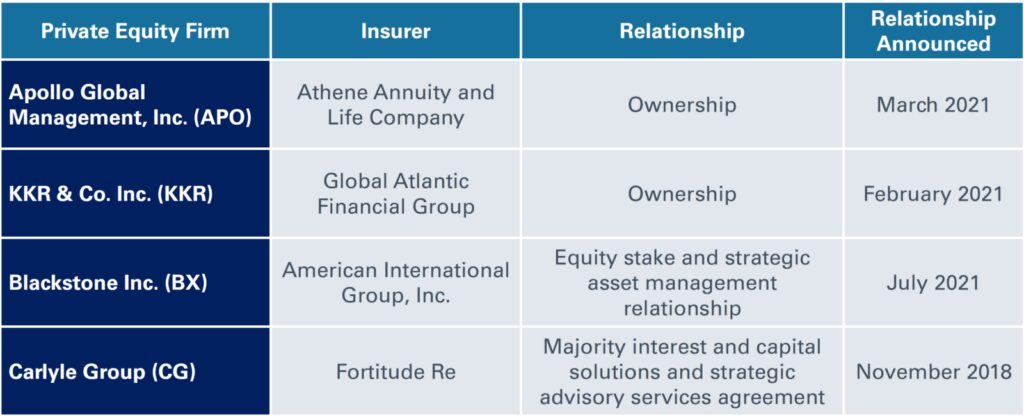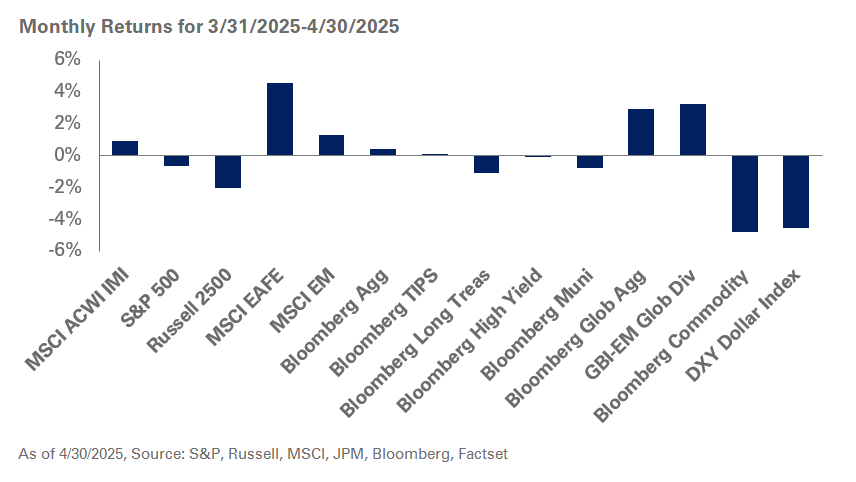In this final installment of a three-part series on transferring risk from defined benefit pension plans, we highlight the ongoing discussions in the marketplace around these complex but increasingly popular transactions.
As the market for pension risk transfers grows, so does the chatter and scrutiny around these involved transactions.
Record-breaking deals, a large number of new entrants, and the continuing role of insurers in group pension annuities are not only leading to greater efficiencies, but also triggering greater oversight from regulators and thoughtful discussions around best practices and governance in the marketplace. We outline below newsworthy topics we believe plan sponsors should be aware of as they contemplate a pension risk transfer.
1. Department of Labor (DOL) Interpretive Bulletin 95-1
Issued in 1995 by the DOL, interpretive bulletin (IB) 95-1 provides guidance on fiduciary standards under ERISA when plan sponsors select an annuity provider for a defined benefit plan. The bulletin recommends that selection decisions be based on “the safest available” rather than the cheapest carrier.
Fiduciaries are required to evaluate the insurer’s creditworthiness and its ability to pay claims using criteria focused on six factors. SECURE 2.0 Act of 20221 directed the DOL to review IB 95-1, consult with the Advisory Council on Employee Welfare and Pension Benefit plans to determine whether amendments are necessary, and report to Congress on the findings of the review, including an assessment of risks to plan participants.
While the DOL has not yet issued its overdue report, the Advisory Council on Employee Welfare and Pension Benefit Plans to the U.S. Department of Labor reported its assessment and recommendations in August 2023. The council reviewed the relevance of IB 95-1’s guidance in today’s market environment, concluding that it remains appropriate, as it has withstood the test of time, and its success has been proven by the absence of a single default or failure of any annuity since its issuance despite significant changes in the world of finance.
Several stakeholders have raised concerns about the retirement security of participants, noting changing insurance ownership structures, complex investments used by insurers to guarantee pension liabilities, loss of Pension Benefit Guarantee Corporation, PBGC, protections, and the impact of partial PRT annuity purchases on residual funded status of plans amongst other issues.
2. Private Equity’s Role in Pension Risk Transfers
Private equity has been increasingly involved in pension risk transfers, including ownership of insurance companies, strategic alliances, and managing assets dedicated to retirees on behalf of insurance companies.
Here are some examples of the relationships between private equity firms and insurance companies:

Given their increasing stake in the insurance companies involved in the PRT market, Senator Sherrod Brown (D-OH) has raised concerns about the role of private equity firms. When pension liabilities are transferred to an insurer, participants lose protection under ERISA and the PBGC. Instead, insurance annuities are covered by state guaranty associations, which protect policyholders in the event of a default by an insurance company.
There is concern around whether these protections will be adequate to fully cover the level of participants’ benefits. Another worry centers around the potentially higher risks taken by private equity firms that own insurers, and the resultant exposure of participants’ benefits to these additional risks. Also, labor unions such as the International Brotherhood of Teamsters and UNITE HERE have raised concerns that some retirement assets for workers are exposed to complex strategies that lack transparency. Concerns from lawmakers and labor unions seek to safeguard the retirement security of participants.
3. Reinsurance
The use of reinsurance in the PRT market has been steadily increasing. Fidelity Investments is the most recent entrant to the market, launching Soteria Reinsurance Holdings, a reinsurance company focused on pension risk transfers. Reinsurance creates additional insurer capacity and diversifies balance sheet risk for an insurer, which ultimately should lead to more competitive pricing. The reinsurance market is expected to be a critical solution to transfer longevity risk, with the first longevity reinsurance transaction in the U.S. completed in 2019.
4. Hibernation Remains a Viable Alternative
While the focus of this series has been on pension risk transfers, we believe hibernation of a whole plan or portion of the liabilities can still be a viable option. In some cases, hibernation can allow plan sponsors to continue enjoying the benefits of maintaining a plan in surplus or avoiding the potentially significant costs of PRT; costs associated with PRT include the premium paid to the insurer, the opportunity cost of investment returns, the impact of settlement accounting, and unknown litigation risk related to transferring pension liabilities to a third party.
Maintaining a pension plan with a surplus can have benefits, including pension income, the potential use of surplus as part of M&A activity, and the ability to increase or re-open the pension. For a well-funded plan, a part of hibernation strategy might seek to reduce funded status volatility materially for the plan to become self-sufficient (i.e., no future required contributions) and manage the plan to not only meet the benefit obligations, but also offset plan expenses such as investment fees, actuarial fees and flat rate PBGC premiums.
5. IBM Reopens Pension Plan
In November 2023, tech giant IBM Corp. announced that starting in 2024 it will no longer provide an employer match for participants in the defined contribution plan. Instead, IBM will fund a 5% credit into a “retirement benefits account” for each employee through a cash balance pension plan. IBM will fund this cash balance plan using a $3.5 billion surplus from the legacy pension plan.
These changes—extensively covered by news publications and discussed in the industry—are expected to save IBM around $ 0.5 billion a year over the next five-to-10 years.
IBM has effectively found a creative way to re-open its pension plan by utilizing the surplus from the defined benefit plan. Traditionally, plan sponsors have been concerned with growing a pension surplus beyond a certain threshold since any attempt to revert the surplus to the plan sponsor incurs a significant tax burden.
This move may compel some plan sponsors to re-think their end game given the real cash savings IBM is expected to generate in the coming years, and the associated benefits of an overfunded pension. Conversations around the advantages of maintaining a pension plan are cropping up, presenting plan sponsors with another lever in their pension risk management strategy. Maintaining the plan and transferring pension risk are not mutually exclusive, so plan sponsors may find middle ground.
6. Lockheed Martin and AT&T Lawsuits
In March 2024, two separate lawsuits were filed against Lockheed Martin Corp. & AT&T Inc. by retirees who are former participants in pensions offered by the two companies. The retirees were subsequently removed from the pension plans and transferred to an insurance company when the two firms purchased group annuity contracts for select retirees.
AT&T executed a $8.1 Billion pension annuity buyout in May 2023 with State Street Global Advisors Trust Co. (SSgA) acting as an independent fiduciary. In the lawsuit, the plaintiffs allege that AT&T placed its retirees in danger by selecting a “risky” annuity provider and that AT&T and SSgA stood to gain from the transfer, prioritizing the cheapest option rather than selecting established annuity providers that have a more reliable track record.
In the case of Lockheed Martin, four retirees filed a lawsuit alleging the company violated its fiduciary duties related to two annuity buyout transactions it recently executed by not selecting the “safest available” insurer, as required by DOL 95-1 guidance.
These lawsuits could signal the beginning of a wave, and we urge plan sponsors to fully understand their responsibilities and evaluate all the implications when acting in a settlor or fiduciary capacity.
When evaluating PRT options, we also encourage plan sponsors to consider the merits of keeping participants in the plan as concerns around the loss of ERISA protections for participants removed from the plan are one of the main complaints in the lawsuits. The lawsuits are fairly recent, and their long-term implications for pension risk transfers are yet to be determined.
At NEPC, we have extensive experience managing plan investments around pension risk transfer activities, including risk reduction strategies leading up to the transaction. We collaborate extensively with companies settling their pension liabilities and believe a successful transfer of pension risk calls for collaboration between the plan sponsor, the investment managers, consultants, ERISA counsel, custodians and actuaries. These highly nuanced and intricate transactions typically take several months to complete and involve multiple steps requiring precise planning and execution.
It is also critical to understand the impact a pension risk transfer will have on the residual liabilities in order to determine how best to manage the ongoing portfolio after the pension risk transfer. With the corporate defined benefit plan ecosystem being the healthiest it has been in years, plan sponsors also have the ability to maintain a well-funded plan or creatively utilize surplus assets.
Please reach out to your NEPC consultant to discuss pension risk transfers and/or other activities related to your plan and key considerations leading up to and after any potential transactions.
1 https://www.dol.gov/sites/dolgov/files/EBSA/about-ebsa/about-us/erisa-advisory-council/eac-consultation-paper07142023-r.pdf



